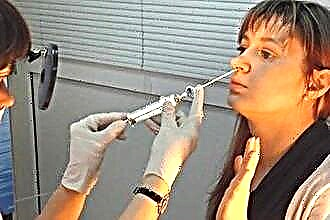Otitis media (inflammation of the outer, middle or inner ear) can occur in a person of any age, although the incidence of pathology is much higher among the child population. When otitis media occurs, the first and most pressing question will be: "What led to the disease?" Prevention of any disease is based on knowledge of what factors determine its development. The causes of otitis media are important in the choice of treatment, as etiotropic therapy is one of the key options. It is aimed directly at the provoking infectious agent. Since the inflammatory lesion of the ear can manifest itself in various forms, have a different nature of the course, it is advisable to consider the etiology of each type of otitis media separately.
Otitis externa

The outer ear is the first to come into contact with damaging factors. Inappropriate use of hygiene devices or improper behavior when bathing in a pond are just two of the many reasons for the development of the inflammatory process, which is called otitis externa. The skin of the auricle and the external auditory canal is very delicate, so even small scratches have an extremely unfavorable effect. With otitis externa, combined processes are often noted (participation in the development of inflammation not only of the microbial, but also of the mycotic flora), the chronic course of the disease.
In order to understand what causes otitis media, one must first of all pay attention to the existence of two forms - limited and diffuse. In the first case, a furuncle appears in the external auditory canal, which is understood as an acute purulent inflammation of the hair follicle. In the second, a large area of the outer ear skin is affected. Among the reasons for the development of otitis externa are:
- Damage to the skin.
Violation of the integrity of the skin does not have to be visible externally. The habit of irritating the skin of the auricle and ear canal with various objects (for example, hairpins, pencil) or nails creates a "gateway" for infection. Even in a healthy person, the surface of the ear skin is inhabited by various microorganisms. And on fingers and non-sterile objects injected into the ear, bacteria can be hazardous to health. To start the infectious-inflammatory process, a scratch is enough, which cannot be distinguished with a glance (moreover, it is unlikely that it will be possible to examine the skin of the ear canal without special instruments). This creates a "vicious circle" - inflammation causes itching, and itching, in turn, prompts the patient to scratch the skin, causing additional trauma. Not only mechanical damage is important, but also chemical and thermal damage. - Improper care.
The ear of a healthy person is a system that takes care of the timely elimination of impurities. Earwax, contrary to popular belief, does not accumulate, and a sulfur plug is more likely to form when sulfur is pushed deep into the ear canal with a cotton swab than when you refuse to clean the ear generally. Excess sulfur is removed on its own - for example, when talking or coughing. An ear toilet is necessary if there are indications - for example, with a fungal or purulent infection, when plaque accumulations need to be softened and carefully removed.
generally. Excess sulfur is removed on its own - for example, when talking or coughing. An ear toilet is necessary if there are indications - for example, with a fungal or purulent infection, when plaque accumulations need to be softened and carefully removed. - Otorea.
Discharge of pus from the middle ear irritates the skin of the ear canal. This can lead to scratching, itching and inflammation. In addition, the long-standing infectious and inflammatory process contributes to a decrease in local immunity. The weakening of the protective properties can be considered as a favorable background for the reproduction of pathogenic microorganisms. - Chronic pathology.
Among the most likely chronic diseases that can become an indirect cause of otitis media, metabolic disorders are considered, for example, diabetes mellitus. A deficiency of vitamins, allergic pathologies with a chronic course lead to pathological changes. - Other reasons.
Ear inflammation develops in conditions of high humidity, including after water gets into the external auditory canal. Otitis externa often affects people who use hearing aids.
The leading cause of the development of otitis externa is trauma to the skin of the structures of the outer ear.
When discussing the etiology of otitis externa, it is necessary to talk about the variants of infectious agents that cause the disease - viruses, bacteria and fungi. Inflammation of the external ear of a viral nature is possible with influenza (hemorrhagic otitis media occurs), herpes infection (ear damage can become one of the symptoms of herpes zoster), and some other viral infections. The spectrum of bacterial pathogens is quite wide - among the probable provocateurs of otitis media are called streptococci, staphylococci, Pseudomonas aeruginosa, etc. Mycotic, or fungal infection of the ear can be caused by fungi of the genus Penicillum, Candida, Mucor, Aspergillus.
Otitis media
 The development of otitis media is associated with infection with viruses, bacteria or mycoses pathogens - fungi. The disease occurs as a result of the effect of microorganisms on the mucous membrane of the middle ear. A contributing factor in this is a change in immune reactivity - otitis media often occurs against the background of a respiratory infection or systemic processes, accompanied by a violation of the mechanisms of immune defense.
The development of otitis media is associated with infection with viruses, bacteria or mycoses pathogens - fungi. The disease occurs as a result of the effect of microorganisms on the mucous membrane of the middle ear. A contributing factor in this is a change in immune reactivity - otitis media often occurs against the background of a respiratory infection or systemic processes, accompanied by a violation of the mechanisms of immune defense.
The causes of otitis media in adults are the penetration of pathogenic agents into the middle ear, which can be realized through:
- violations of the patency of the auditory tube;
- hematogenous pathway;
- transtympanic pathway.
An acute form of otitis media develops in patients with acute or chronic pathology of the respiratory system (ARVI, rhinopharyngitis, sinusitis), as well as after surgery (including tonsillectomy).
A rare, but possible way of penetration of infection is meningogenic - through the aqueducts of the ear labyrinth in the meningococcal inflammatory process.
The spread of the pathogen by the hematogenous route is observed when:
- scarlet fever;
- measles infection;
- flu;
- tuberculosis.
The transtympanic pathway implies the entry of infection through the damaged tympanic membrane - infection occurs through the cavity of the external auditory canal. Eardrum injury occurs during an explosion, improper removal of a foreign body, etc.
A special variant of otitis media is mycotic otitis media, the causes of which are often the subject of controversy among professionals in the field of otolaryngology. For a long time, researchers attributed the fungal infection to the irrational use of antibacterial and immunosuppressive drugs, including glucocorticosteroids. This opinion is still valid, but the results of scientific research indicate that a direct connection with drug therapy can not always be traced. Contributing factors are of considerable importance - for example, the addition of a fungal infection in the presence of a bacterial infection is the most typical variant of the course of mycotic otitis media.
Internal otitis media
 The name "internal otitis media" is not always considered correct, therefore experts use the definition "labyrinthitis", reflecting the anatomical localization of the infectious and inflammatory process.What causes otitis media? Labyrinthitis is usually detected as a complication of otitis media, meningitis, influenza, mumps.
The name "internal otitis media" is not always considered correct, therefore experts use the definition "labyrinthitis", reflecting the anatomical localization of the infectious and inflammatory process.What causes otitis media? Labyrinthitis is usually detected as a complication of otitis media, meningitis, influenza, mumps.
When describing the types of the disease, depending on the etiology, one can distinguish:
- nonspecific labyrinthitis;
- specific labyrinthitis.
All forms of a disease of a viral or bacterial nature are called nonspecific, excluding the specific process in tuberculosis and syphilis.
There are several possible routes of infection:
- Tympanogenic.
- Meningogenic.
- Hematogenous.
- Traumatic.
The tympanogenic pathway is possible with the destruction of the bone wall of the labyrinth - an infection (usually of a bacterial nature) enters the inner ear from the middle ear cavities. The meningogenic pathway is spoken of in the case of meningitis, which develops with tuberculosis, typhoid, influenza, scarlet fever.
For meningogenic labyrinthitis, bilateral lesions are characteristic.
The hematogenous variant of the spread of the pathogen is realized with influenza, other diseases of viral etiology. Damage to the bone and membranous labyrinth creates the prerequisites for a traumatic pathway of infection.

 generally. Excess sulfur is removed on its own - for example, when talking or coughing. An ear toilet is necessary if there are indications - for example, with a fungal or purulent infection, when plaque accumulations need to be softened and carefully removed.
generally. Excess sulfur is removed on its own - for example, when talking or coughing. An ear toilet is necessary if there are indications - for example, with a fungal or purulent infection, when plaque accumulations need to be softened and carefully removed.

